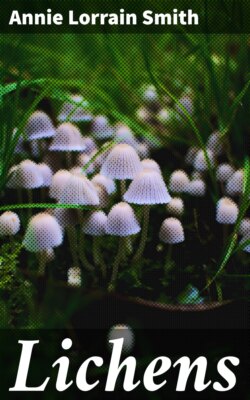Читать книгу Lichens - Annie Lorrain Smith - Страница 71
На сайте Литреса книга снята с продажи.
C. Survey of Mechanical Tissues
ОглавлениеMechanical tissues scarcely appear among fungi, except perhaps as stoutish cartilaginous hyphae in the stalks of some Agarics (Collybiae, etc.), or as a ring of more compact consistency round the central hyphae of rhizomorphic strands. It is practically a new adaptation of hyphal structure confined to lichens of the fruticose group, where there is the same requirement as in the higher plants for rigidity, flexure and tenacity.
Rigidity is attained as in other plants by groups or strands of mechanical tissue situated close to the periphery, as they are so arranged in Ramalina and Cladonia; or the same end is achieved by a strongly developed fastigiate cortex as in Roccella. Bending strains to which the same lichens are subjected, are equally well met by the peripheral disposition of the mechanical elements.
Tenacity and elasticity are provided for in the pendulous forms either by a fibrous cortex as in Alectoria, or by the chondroid axis in Usnea. Haberlandt[379] has recorded some interesting results of tests made by him as to the stretching capacity of a freshly gathered pendulous species in which the central strand was from ·5 to 1 mm. thick. He found he could draw it out 100 to 110 per cent. of its normal length before it gave way. In an upright species the frond broke when stretched 60 to 70 per cent. In both of the plants tested, the central strand retained its elasticity up to 20 per cent. of stretching. The outer cortical tissue was cracked and broken in the experiments. Schulte[380] calculated somewhat roughly the tenacity of Usnea longissima and found that a piece of the main axis 8 cm. long carried up to 300 grms. without breaking.
